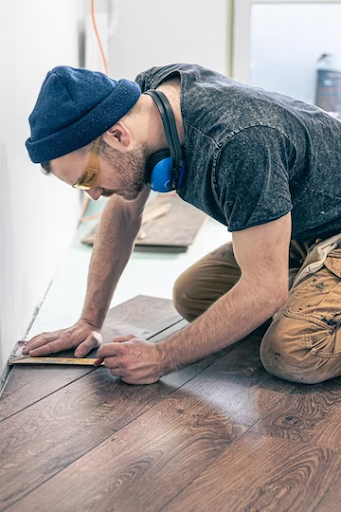Wooden flooring is a favorite for its warmth, character, and longevity. Even the best-kept floors, nevertheless, are susceptible to wear and tear over time.
Sanding your wood floors is essential in preserving their beauty and prolonging their lifespan.
This content will go over the significance of hardwood floor sanding and its advantages and some advice for making the process go smoothly.
Table of Contents
What Is Floor Sanding and Refinishing?
Wood floor sanding is a process where the top surface of a floor is stripped, while refinishing involves repairing.
While sanding and refinishing are often expensive.
They provide a more aesthetically pleasing look and can be more practical than covering the floor with a carpet.
What Is the Historical Role of Wood Floor Sanding?
Sanding wood floors is a practice that has been practiced previously. Its origins can be found in the Middle Ages when artisans used scrapers to smooth away flaws in wooden flooring.
This method’s development over the ages emphasizes how crucial it is to preserve timber floors.
Despite advancements in advanced equipment, sanding remains a vital aspect in preserving oak floors’ durability and aesthetic appeal.
There are some benefits of wood floor sanding in the following content.
REDUCE CLEANING TIME
Poorly kept hardwood floors will always gather dust. It means keeping your surroundings neat and orderly will take a lot more time and effort.
People are often induced to install carpet over their lovely hardwood floors because they believe it will be easier to maintain.
Nevertheless, spills and stains can destroy carpets and require frequent vacuuming!
Hardwood floors that have recently been sanded and properly coated will hold far less dust and debris than any carpet and won’t get sticky.
Your floor will remain spotless and showcase your room fully with a fast vacuum and mop.
Correction of Unevenness
Wooden flooring can get uneven in sections over time due to normal wear and tear and the home’s structure shifting.
Sanding can help rectify uneven areas on surfaces, providing a level surface that enhances appearance, safety, and comfort for walking.
Eco-friendliness
When it comes to ecology, sanding and refinishing old oak floors is preferable to installing new flooring. By conserving wood and reducing waste, you can help make home improvement more environmentally friendly and sustainable.
Elimination of screeches and creaks
As wooden flooring ages or humidity levels fluctuate, they may creak and squeak.
By tightening the flooring and removing these obtrusive sounds, sanding can make a home more comfortable and silent.
Improve Floor Safety And Stability
Your hardwood floors will inevitably wear down, especially in areas with heavy foot traffic and furniture movement.
If you don’t take action to repair damage to your hardwood floor, it can cause several issues. As an illustration:
Cracks in flooring can attract pests, cause unevenness, and increase the risk of splinters due to deteriorating floorboards and wooden panels.
Sanding, sealing, and refinishing hardwood floors is critical for maintaining their strength and durability by filling gaps and smoothing cracks.












